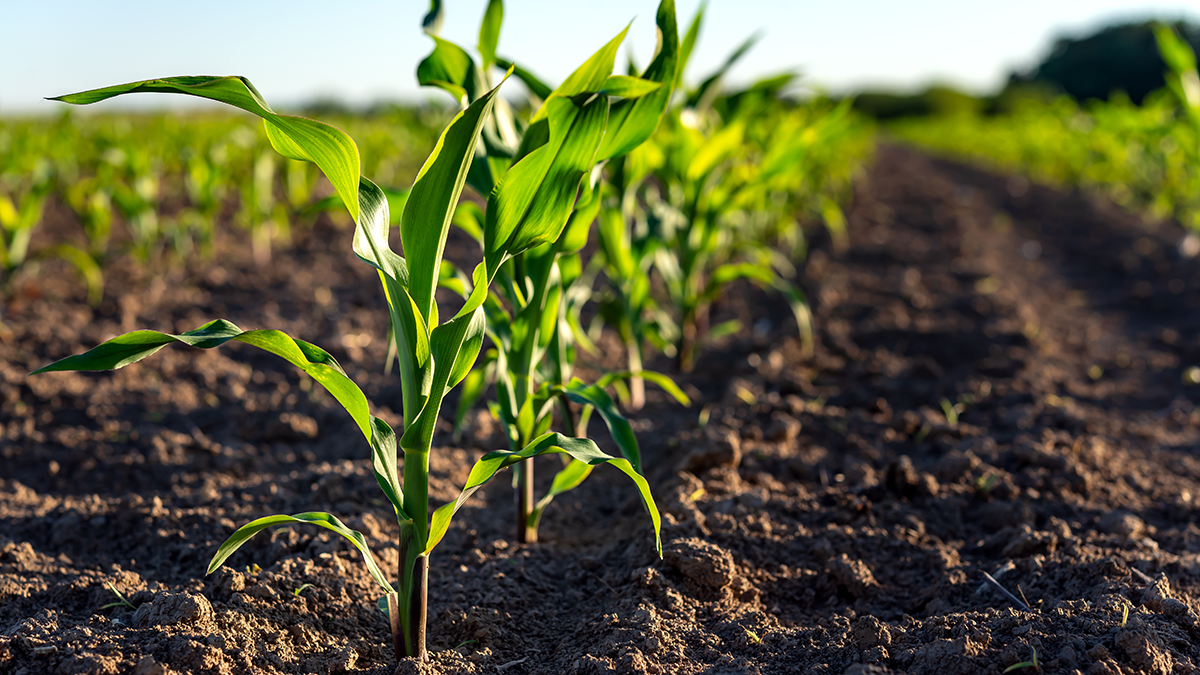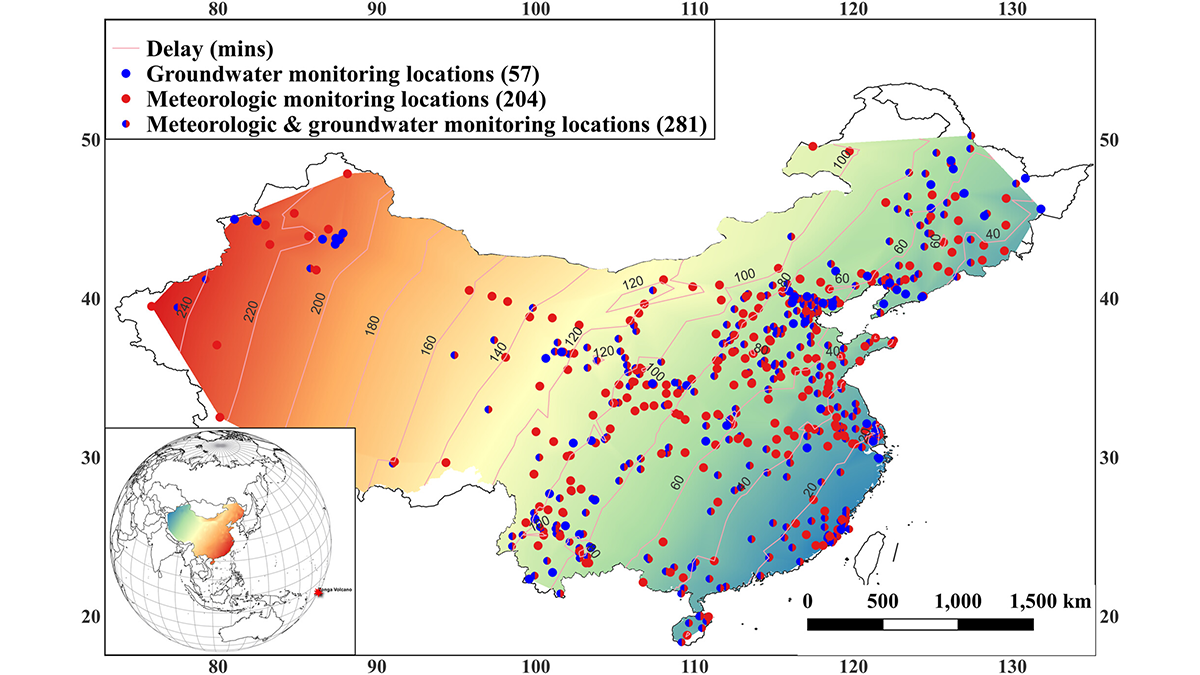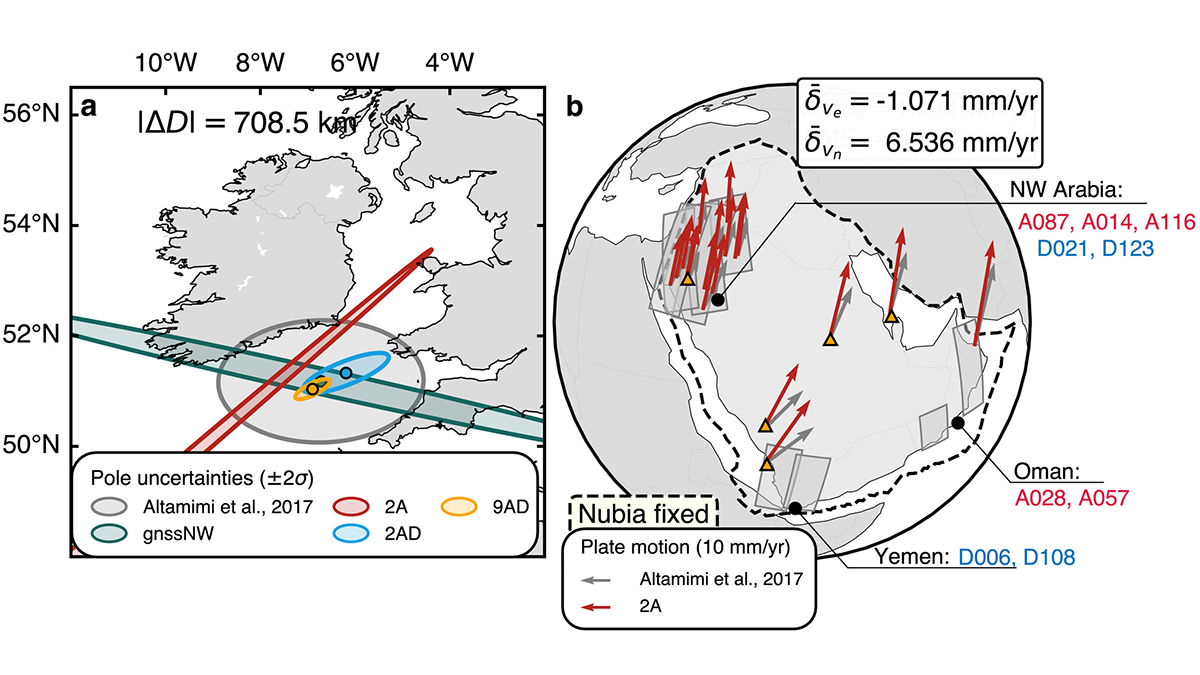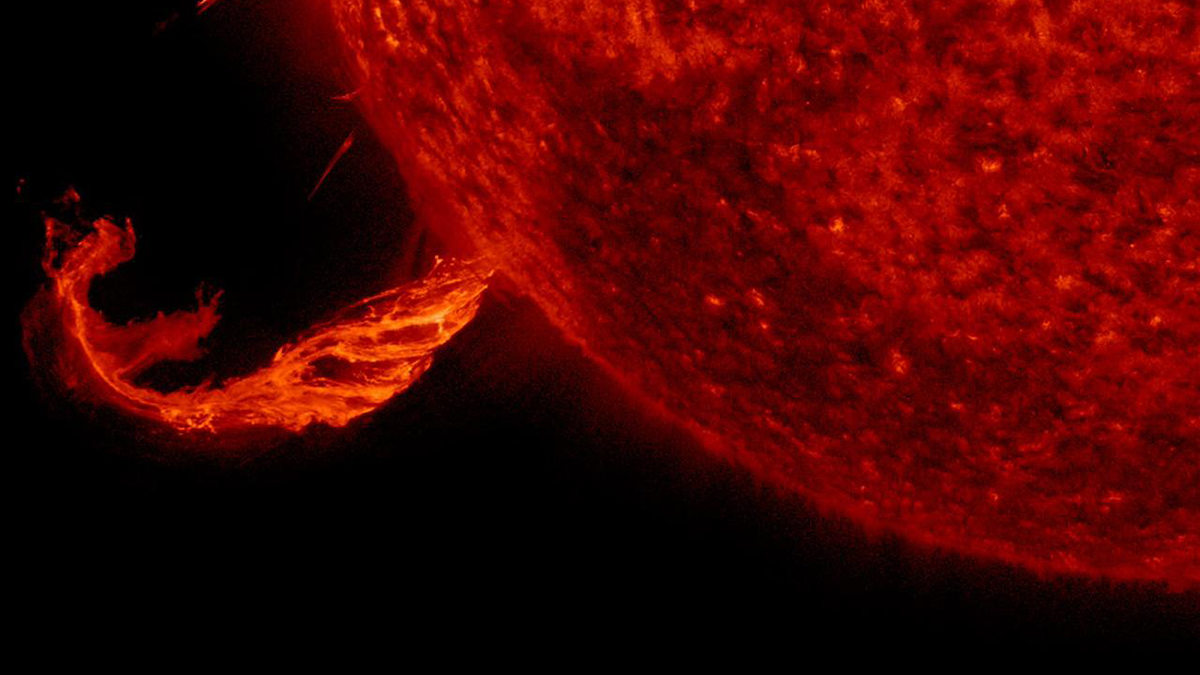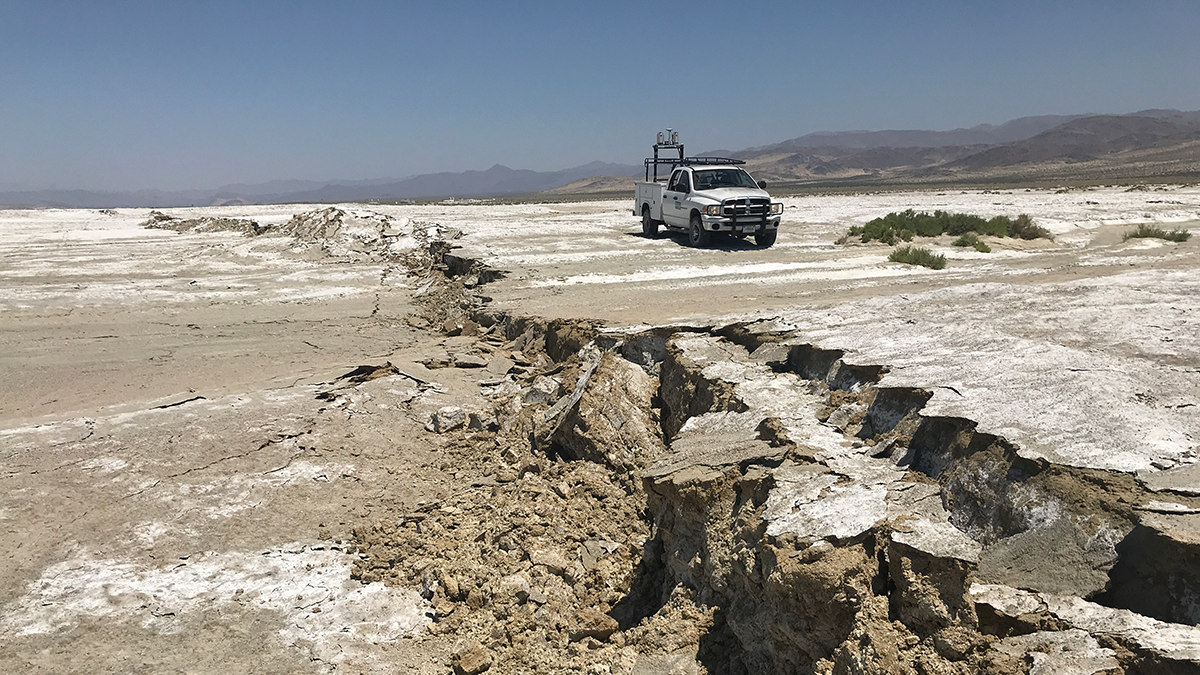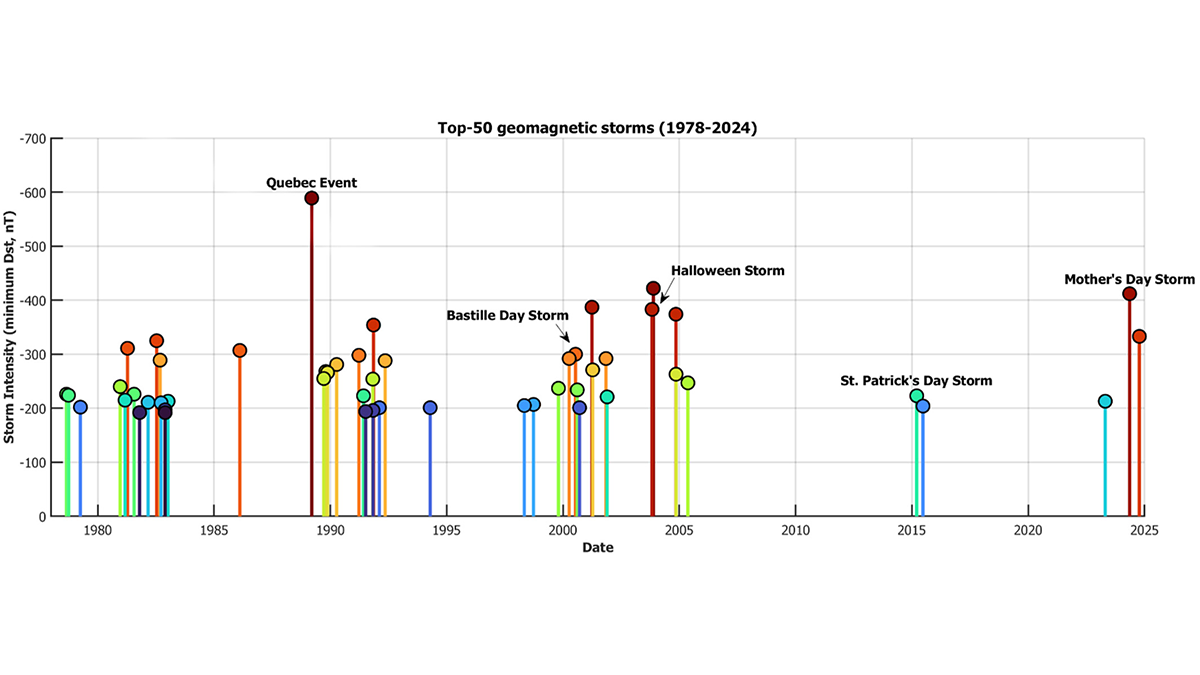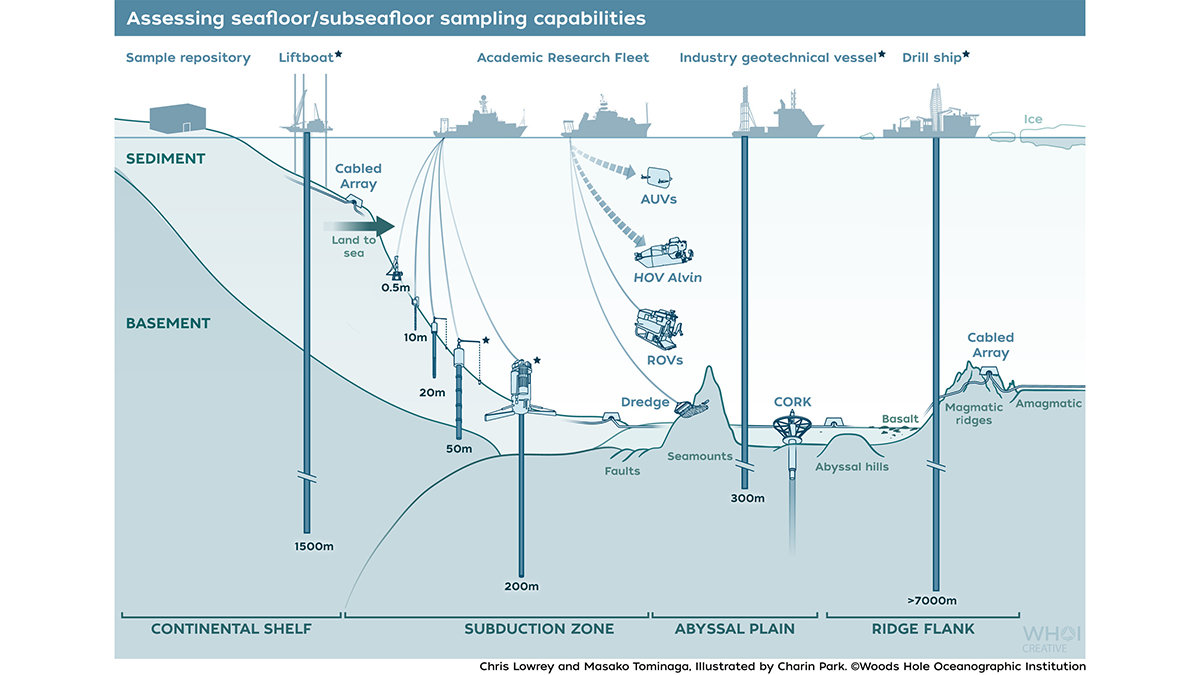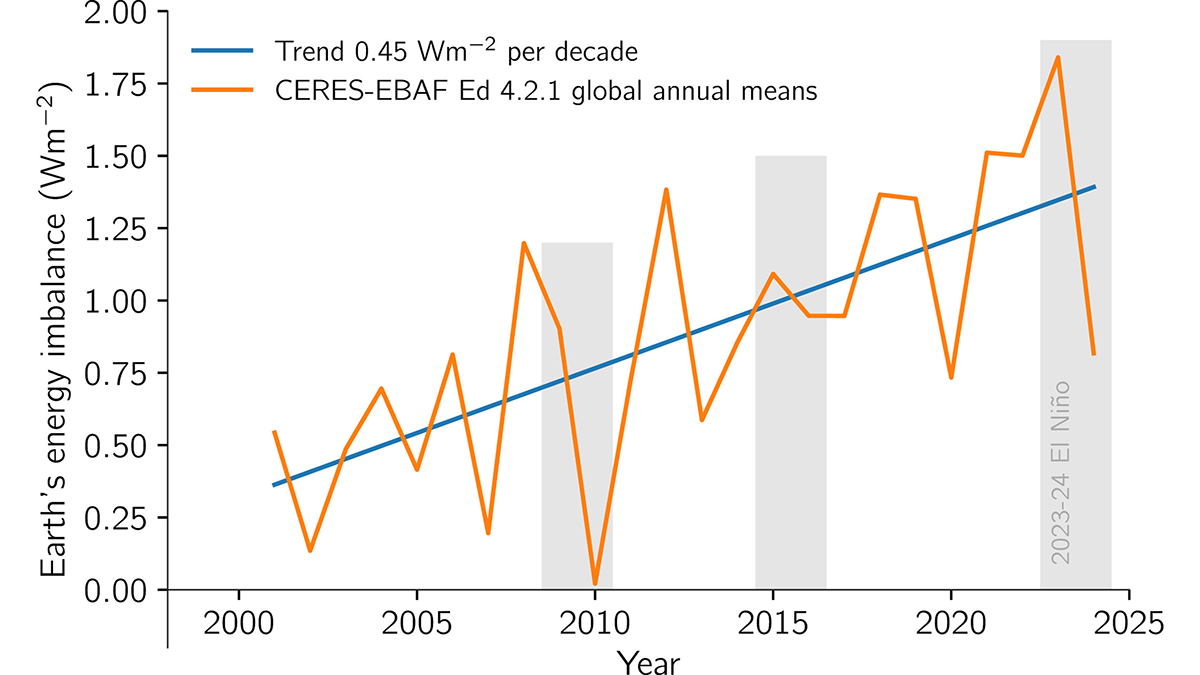Scientists find that water stress drives the connection between surface temperature and crop yield loss, providing information to help improve predictions of agricultural productivity under climate change.
Editors’ Highlights
A Volcanic Boom Puts the Squeeze on Remote Confined Aquifers
A new study shows that ground water levels responded to forcing by barometric pressure pulses from the 2022 Hunga Tonga-Hunga Ha’apai Volcanic Eruption.
Mapping the Whereabouts of Continents
A new method integrates Interferometric Synthetic Aperture Radar (InSAR) with conventional ground geodetic networks, taking us closer to high-resolution mapping of plate motions.
Why Subsequent ICMEs are More Geoeffective
A new study demonstrates how an interplanetary coronal mass ejection (ICME) clears the path for following transients and explains why subsequent ICMEs are more geoeffective.
New Insights into How Rocks Behave Under Stress
New 3D imaging techniques show hidden patterns of stress that help explain how and why rocks break.
The Power of Naming Space Weather Events
Mother’s Day Storm? Why not! Bastille Day Storm? Mais oui! Space scientists make the case for a standardized naming convention for geomagnetic storms, to increase public awareness and preparedness.
Scientists Face Limitations Accessing Seafloor Information
Recent reductions in U.S. oceanographic assets are limiting scientists’ ability to access vital materials in the ocean.
Midlatitude Storm Dynamics Better Explained by Lagrangian Analysis
Examining the growth of storms using ERA-5 reanalysis data reveals a nonlinear relationship between baroclinicity and storm activity under extreme conditions.
Defining the Tropopause in Chemical Transport Models
Synthetic tracers are useful in defining the chemically-heterogeneous tropopause in chemical transport models, especially where more traditional gradient-based tropopause methods may be lacking.
Earth’s Energy Imbalance is Growing Faster Than Expected
Satellite observation of the imbalance between incoming and outgoing radiation in the atmosphere, which causes global warming, shows growth beyond what climate models have predicted.

